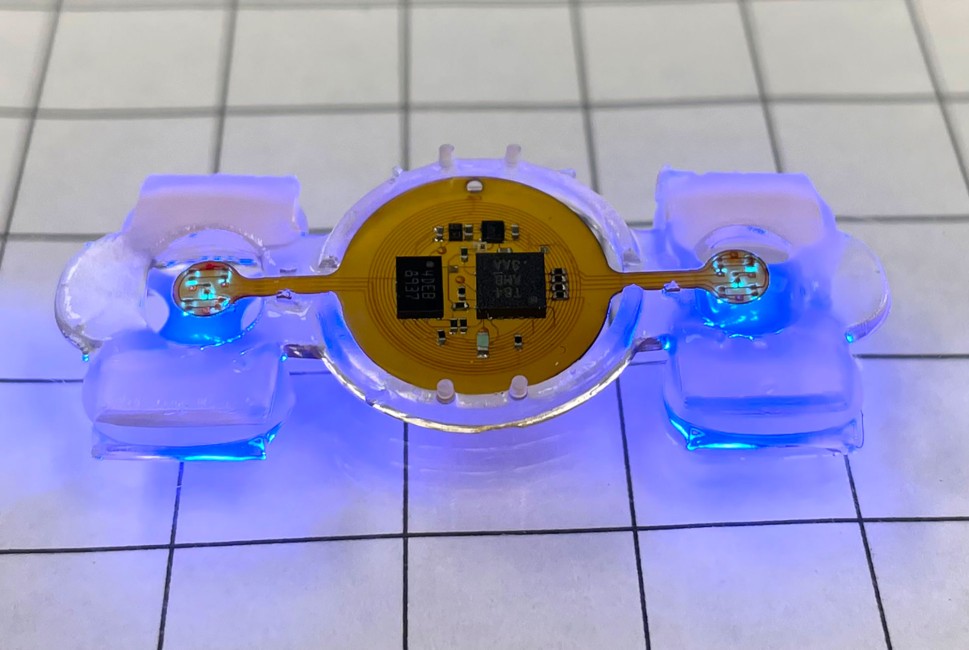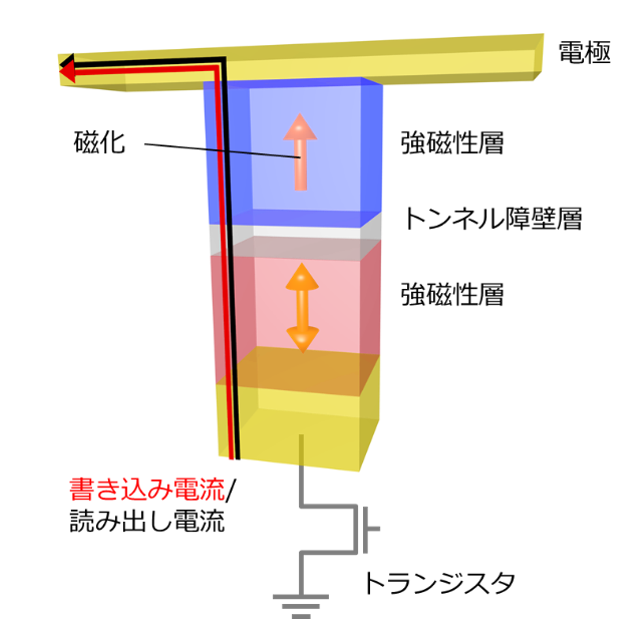ヘリカルフィラメントの回転マルチマテリアルプリントによるソフトロボティクスと構造複合材料の実現 Rotational multimaterial printing of helical filaments for soft robotics and structural composites
2023-01-18 ハーバード大学
・ハーバード大学の研究者らは、らせん状フィラメントを作成するための回転マルチマテリアル3Dプリント方法を開発しました。この新しい方法を用いて、研究チームは、ソフトロボットや構造用途に使用する人工筋肉とバネ性の格子を設計・製作しました。この研究成果は、『Nature』誌に掲載されています。
・この新しいプリントヘッドは、4つのインクカートリッジで構成されており、それぞれのカートリッジに異なる材料を入れることができます。インクは、複数の材料を同時に印刷できるよう、複雑なノズルを介して供給されます。ノズルが回転して平行移動すると、押し出されたインクがらせん状の形状を持つフィラメントを形成します。
・研究チームは、Extended Tarr Family Materials教授のDavid Clarke氏と共同で、電圧をかけると収縮するらせん状の誘電エラストマーアクチュエーターフィラメントの形で人工筋肉をプリントしました。導電性電極は、柔らかいエラストマーマトリックスに包まれた、絡み合うらせんを形成している。 このらせん状電極の巻き具合を調整することで、アクチュエーターの収縮反応をプログラムすることができる。
・さらに研究チームは、柔らかいマットレスの中の金属バネのように、硬いらせん状のバネを柔らかいマトリックスに埋め込んで、硬さの異なる構造格子を設計した。マトリックス内のスプリングの密度を調整することで、材料全体の剛性を調節することができる。このような調整可能ならせん構造は、ソフトロボットシステムの関節やヒンジに利用できるかもしれません。
・プリントヘッドは4つのインクカートリッジで構成されており、それぞれのカートリッジに異なる材料を入れることができます。インクは、複雑なノズルを通して供給され、複数の材料を同時に印刷することができます。
・研究チームは次に、この新しい3Dプリント方法の能力を活用して、さらに複雑な構造物を作成することを目指しています。 「より極端な内部特性を持つノズルを設計・製造することで、これらの階層的なバイオインスパイアード構造の解像度、複雑さ、性能をさらに高めることができます」とLarson教授は述べています。
<関連情報>
- https://seas.harvard.edu/news/2023/01/multimaterial-3d-printing-twist
- https://www.nature.com/articles/s41586-022-05490-7
サブボクセル制御によるフィラメントの回転式マルチマテリアルプリント Rotational multimaterial printing of filaments with subvoxel control
Natalie M. Larson,Jochen Mueller,Alex Chortos,Zoey S. Davidson,David R. Clarke & Jennifer A. Lewis
Nature Published:18 January 2023
DOI:https://doi.org/10.1038/s41586-022-05490-7

Abstract
Helical structures are ubiquitous in nature and impart unique mechanical properties and multifunctionality1. So far, synthetic architectures that mimic these natural systems have been fabricated by winding, twisting and braiding of individual filaments1,2,3,4,5,6,7, microfluidics8,9, self-shaping1,10,11,12,13 and printing methods14,15,16,17. However, those fabrication methods are unable to simultaneously create and pattern multimaterial, helically architected filaments with subvoxel control in arbitrary two-dimensional (2D) and three-dimensional (3D) motifs from a broad range of materials. Towards this goal, both multimaterial18,19,20,21,22,23 and rotational24 3D printing of architected filaments have recently been reported; however, the integration of these two capabilities has yet to be realized. Here we report a rotational multimaterial 3D printing (RM-3DP) platform that enables subvoxel control over the local orientation of azimuthally heterogeneous architected filaments. By continuously rotating a multimaterial nozzle with a controlled ratio of angular-to-translational velocity, we have created helical filaments with programmable helix angle, layer thickness and interfacial area between several materials within a given cylindrical voxel. Using this integrated method, we have fabricated functional artificial muscles composed of helical dielectric elastomer actuators with high fidelity and individually addressable conductive helical channels embedded within a dielectric elastomer matrix. We have also fabricated hierarchical lattices comprising architected helical struts containing stiff springs within a compliant matrix. Our additive-manufacturing platform opens new avenues to generating multifunctional architected matter in bioinspired motifs.



